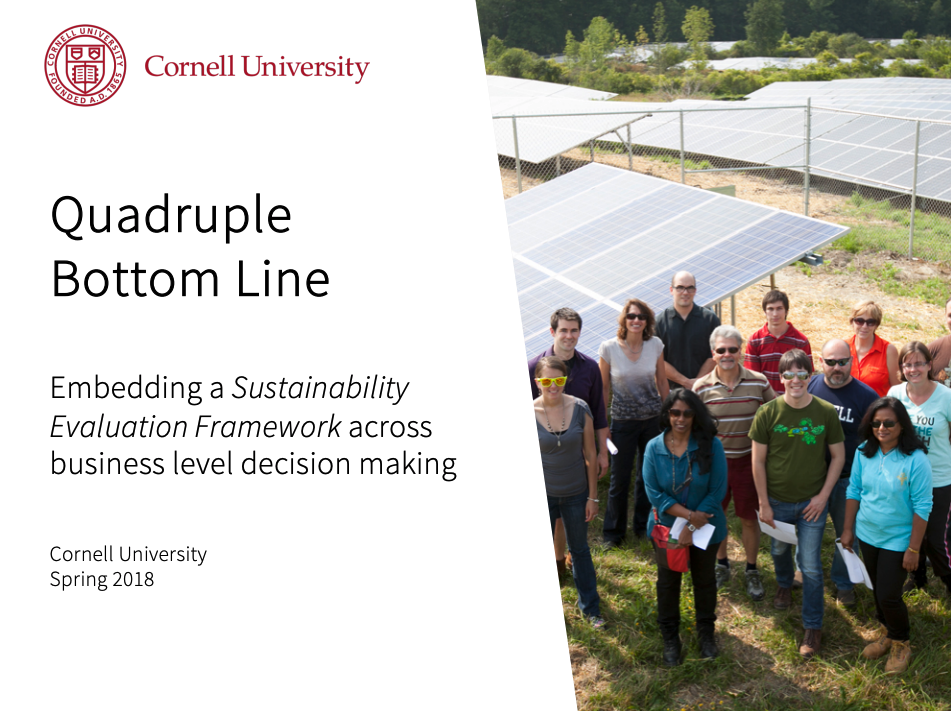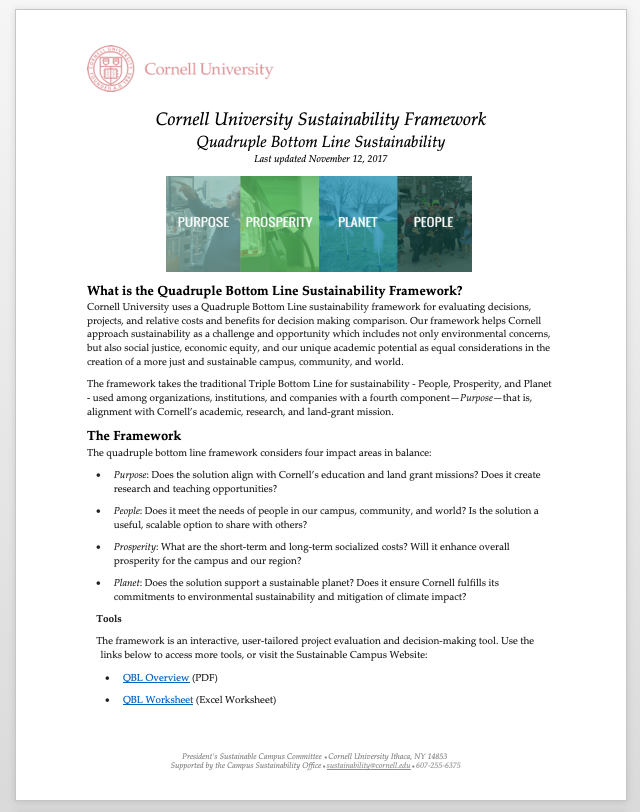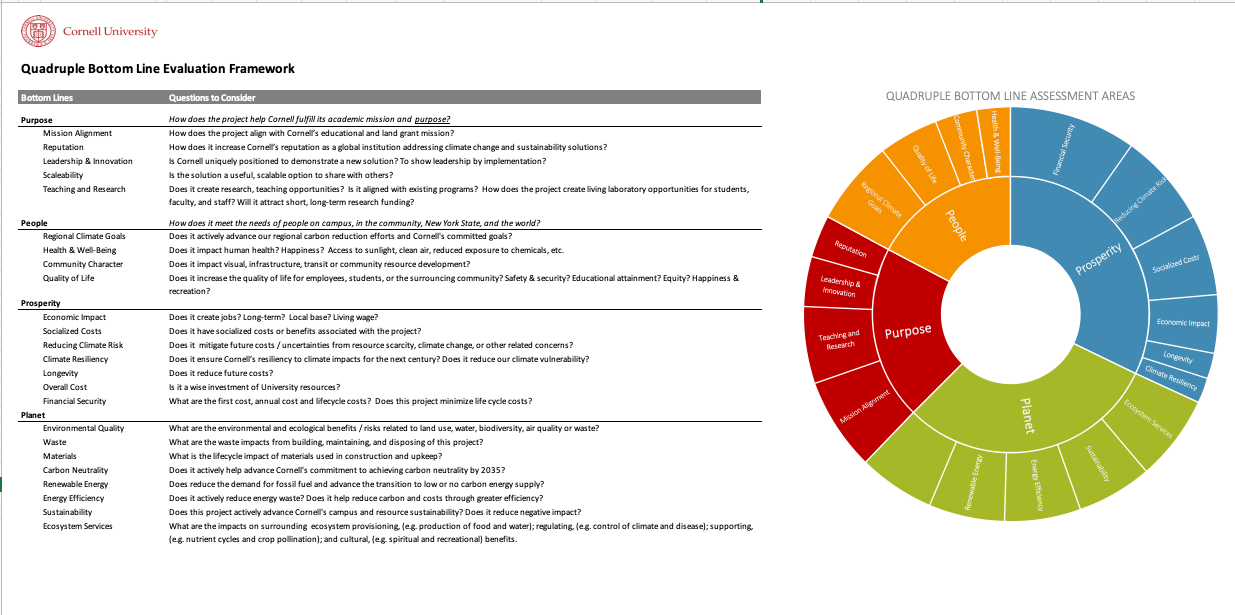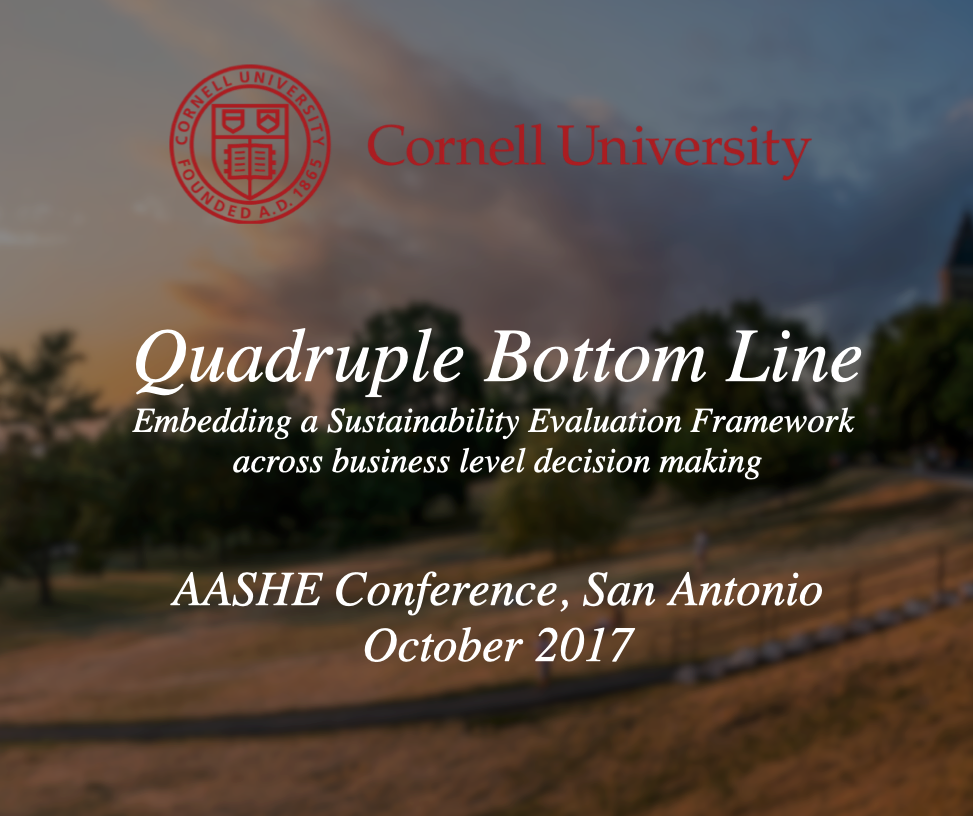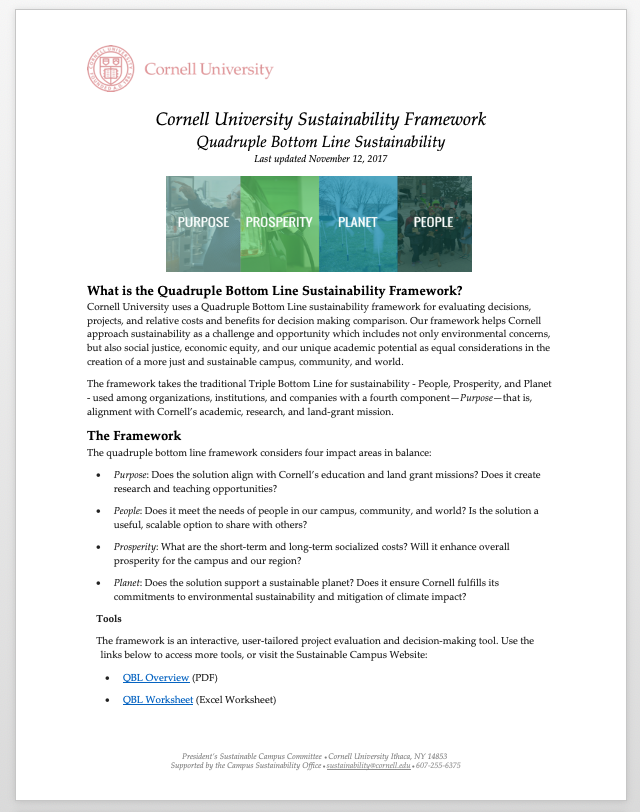Get Started
People. Prosperity. Planet. Purpose. These four impact areas comprise Cornell's "quadruple bottom line" sustainability framework.
Sustainability Definition
We can think of sustainability as a framework for considering how our actions, culture, and systems help create a healthy planet, ensure the wellbeing, equity, and vitality of people, and support a thriving economy - including education, healthcare, and goods and services. The most often quoted definition of sustainability comes from the UN World Commission on Environment and Development:
“Sustainable development meets the needs of the present without compromising the ability of future generations to meet their own needs.”
We need a healthy planet to support healthy people, but sustainability isn't just about the environment. The needs of people are at the forefront of sustainability, as are other living things and systems on our planet Earth.
Sustainability presumes that resources are finite, and should be used conservatively and wisely with a view to long-term priorities and consequences of the ways in which resources are used. The choices we make today involve real costs to humans, ecological support systems, and the current and future health of our planet.
Our Framework: The Quadruple Bottom Line
Cornell has embraced a sustainability framework that incorporates the three key areas of environment, economy, and equity (which we call planet, prosperity, and people), and adds a fourth area of consideration which helps us examine how we can best contribute to a more sustainable world as an educational institution - our purpose. This Quadruple Bottom Line Sustainability Framework is outlined below and is both an "ethos" for how we consider sustainability as part of our campus education and operations, but also a tool for decision making that can be used by anyone on campus.
We are working to integrate this decision-making framework across all University systems. This will help individuals examine the real costs of our choices, and make better decisions for today and the health of our planet and people for the future. This "sustainability framework" can help every unit make better decisions about the benefits and costs of a project, purchase, or process.
Four Bottom Lines
Moving beyond the traditional "single bottom line" - fiscal cost - the sustainability framework expands decision making to four related sustainability areas. The framework is a series questions and practical tools, which can be used for small projects, business systems change, and decision-making at any level to help consider how choices we make enhance the well-being and health of people, enriches our campus and community's economic prosperity, protects and values ecosystems and our planet, and harnesses our leadership, our land-grant mission, and our academic purpose.
The sustainability framework helps teams consider four questions for a project, solution, or change:
-
Does the solution meet the needs of People on campus, in the community and in the world?
-
Will the solution enhance overall Prosperity for the campus and our region?
-
Does the solution support a sustainable Planet?
-
Does the solution help Cornell fulfill its academic mission and Purpose?
Who developed the framework?
The framework was developed by the Senior Leaders Climate Action Group and members of the Campus Sustainability Office and Energy & Sustainability Department staff in Facilities & Campuses Services, in Fall 2016. The framework should be considered a flexible, living set of tools and ideas.
Contact the Campus Sustainability Office for guidance or questions about the tool and framework's development.
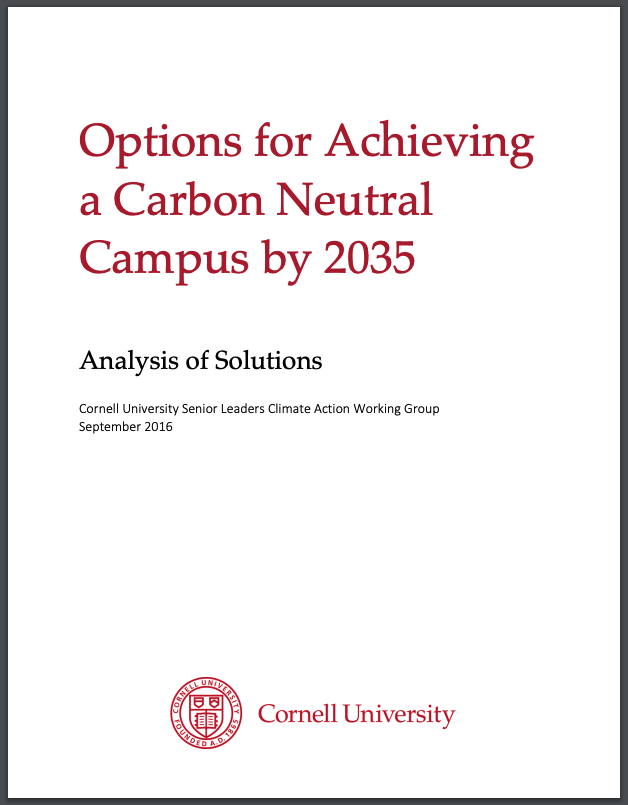
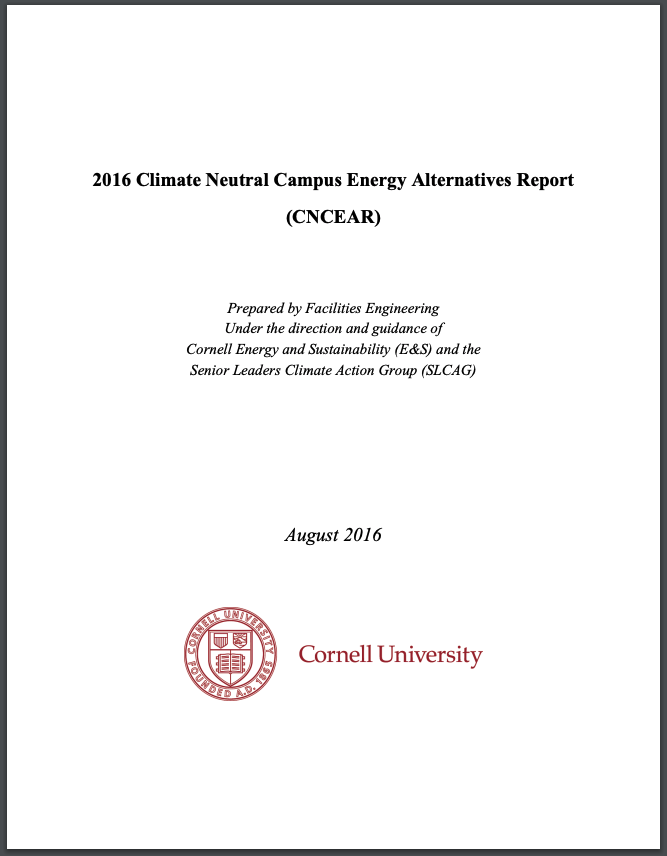
How Can I Use This Tool?
The tools combine quantitative and qualitative analysis tools which will help explore the various considerations of each 'bottom line', and drive decision-making towards consensus.
The Sustainability Framework does not provide guidance on what criteria a group or unit should use to make a final decision. Rather, as with a more traditional cost accounting, it provides clear data from which to compare benefits and costs in balance before making a decision on how to purchase, pursue, or adjust a business system. How your group decides to interpret the data is up to you. The tool provides new information for you to make a more informed, sustainable decision.
Get Started
We’ve compiled an easy guide to utilizing the Sustainability Framework here.
-
Review the Cornell Sustainability Framework Presentation (PPT)
-
Download the Sustainability Framework Worksheet (PDF) and Category Assessment Workbook (Excel) - download opens in Box.com
-
Use the worksheet and workbook to go through these steps:
-
Step 1: Review and Refine Categories
The sustainability assessment is meant to be flexible based on your project needs. While all QBL assessment's must include at least one consideration in each of the four focus areas (people, prosperity, planet, and purpose), your team may choose as many or as few sub-topics as are appropriate. Use the worksheet as a a starting place, and remove or add sub-categories. For example, your project might consider under the "People" area sub-categories of Health, Wellbeing, Accessibility, and Inclusion.
Optional: You may wish to give each sub-category a weight, if some are more important than others. Adjusting this column in the spreadsheet will change your final accounting during the qualitative review.
-
Step 2: Discussion (Qualitative Assessment)
Form a team to assess benefits and impacts for each area. Questions to prompt thinking are provided in the worksheet, but you should include your own. Discussion and reflection by a diverse group is recommended. Take notes and compare ideas with your group.
Note: No team will have all of the answers or expertise to fully answer questions about sustainability. The purpose of this exercise is to uncover what you can, and use this discovery process to better inform information gaps and decision-making. Don't get locked in analysis paralysis!
-
Step 3: Assign a Rating (Quantitative Assessment)
Time to translate your discussion and observations into quantitative ratings. The worksheet allows the user to tailor whether some categories should carry more weight than others. Provide a numerical ranking for each category or sub-category.
Optional: Your group may wish to do this individually, then compare notes and arrive at a final collective numerical ranking OR aggregate or average individual contributions. There is no correct way to do this step.
-
Step 4: Final Decision
Use the combined qualitative and quantitative assessment to inform decision making.
The worksheet provides various graphic representations of categories and final scores.
Optional: Share your process and worksheet with the Campus Sustainability Office (email link) to help other teams refine their process, and for continual improvement of these tools.
-


